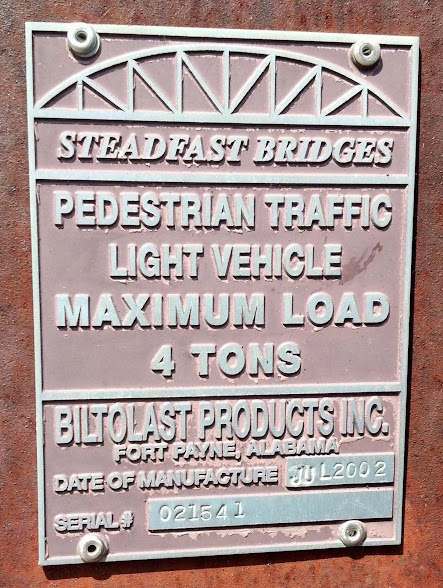| One Thousand Twenty Fifth #2 in the Famous People (FP) Series - Steadfast Bridges |
 |
 Steadfast Edward Bridges is another little-known nephew of Lloyd Bridges and cousin of Beau and Jeff Bridges. Born on April 1, 1954, he will be celebrating his 60th birthday this year. While his cousins were raised in Holmby Hills, the affluent suburb of Los Angeles, Steadfast was born in Iron City, Tennessee. The family planned to move to Iron City, Georgia, but learned that the name was a misnomer. The town had no industrial activity - and no jobs. His family instead opted to move to Pittsburgh, Pennsylvania, which has been nicknamed both "Iron City" and "Steel City U.S.A."
Steadfast Edward Bridges is another little-known nephew of Lloyd Bridges and cousin of Beau and Jeff Bridges. Born on April 1, 1954, he will be celebrating his 60th birthday this year. While his cousins were raised in Holmby Hills, the affluent suburb of Los Angeles, Steadfast was born in Iron City, Tennessee. The family planned to move to Iron City, Georgia, but learned that the name was a misnomer. The town had no industrial activity - and no jobs. His family instead opted to move to Pittsburgh, Pennsylvania, which has been nicknamed both "Iron City" and "Steel City U.S.A."
Steadfast thrived in this environment. As he progressed in school, his fascination with metallurgy, especially the various formulas for steel, continued to grow. He was also interested in the structural aspects of how bridges are constructed. His enthusiasm for all aspects of steel bridges also influenced his younger brother Trestle. Both Steadfast and Trestle were accepted into the Engineering College of Carnegie Mellon University. The boys decided to divide their focus to increase the breadth of their collective knowledge. While Trestle studied Mechanical Engineering with an emphasis on Metallurgy, Steadfast studied Civil Engineering with an emphasis on the Mechanics of Materials and Structural Design.
After graduation, they turned their collective attention to a radical new design. Instead of traditional I beam girders, they experimented with the square, hollow "box beam." A box or tubular girder is a girder that forms an enclosed tube with multiple walls, rather than an I or H-beam. Originally constructed of riveted wrought iron, Trestle and Steadfast developed a method of creating the beams from rolled or welded steel or aluminium extrusions. Compared to an I-beam, the advantage of a box girder is that it better resists torsion. Having multiple vertical webs, it can also carry more load than an I beam of equal height (although it will use more material than a taller I beam of equivalent capacity).
The box beam was not new. The theoretical basis of the box girder was largely the work of the engineer Sir William Fairbairn, with the aid of the mathematician Eaton Hodgkinson, around 1830. They sought an optimal design for the most efficient design of beam in the new material of riveted wrought iron plates. However, in the early 1970s, a number of box girder bridges collapsed during construction: the Cleddau Bridge in Wales, West Gate Bridge in Australia and the Koblenz Bridge in Germany. These led to extensive studies of the safety of box girders and serious concern over their continued use. This was also an early use of computer modeling and a spur to the development of finite element analysis in civil engineering.
Trestle and Steadfast used the emerging computer sciences, Trestle's knowledge of metallurgy and Steadfast's mastery of structural design to develop a new bridge design. In naming the product, Trestle deferred to his older brother - mostly for marketing reasons - and the design was named after Steadfast. Their stature in the community grew. Both boys were featured in a documentary entitled "The Bridges of Allegheny County." In fact, their fame grew to the extent that Pittsburgh picked up another nickname, "The City of Bridges."
 In honor of the 60th birthday of Steadfast Bridges, I have placed a cache on one of the many box beam girder pedestrian bridges in our city that bears his name. You are looking for a very small container. In the interest of safety and to have a better chance of finding the cache, please step off of the bridge to hunt for the cache. You will need to bring your own writing instrument and a handy log extraction tool, such as tweezers or a paper clip.
In honor of the 60th birthday of Steadfast Bridges, I have placed a cache on one of the many box beam girder pedestrian bridges in our city that bears his name. You are looking for a very small container. In the interest of safety and to have a better chance of finding the cache, please step off of the bridge to hunt for the cache. You will need to bring your own writing instrument and a handy log extraction tool, such as tweezers or a paper clip.
To help wish Happy Birthday to Steadfast Bridges,
you are encouraged to take a silly picture at the posted coords
in front of the plaque that honors him.
 Please note that, and I mean this in all sincerity, there is absolutely no connection whatsoever between Steadfast Bridges and FP #768 Corri English.
Please note that, and I mean this in all sincerity, there is absolutely no connection whatsoever between Steadfast Bridges and FP #768 Corri English.

You can validate your puzzle solution with certitude.
|
Garmin 62st GPSr Accuracy to 100% confidence and 2 ft |
|
Avoid the use of acronym only logs and cut 'n paste logs. You must sign the log to claim the find.
No exceptions, no excuses.
Click here for free Replacement Logs. Blank logs may be deleted without notice.
This cache description is, of course, an April Fools prank.